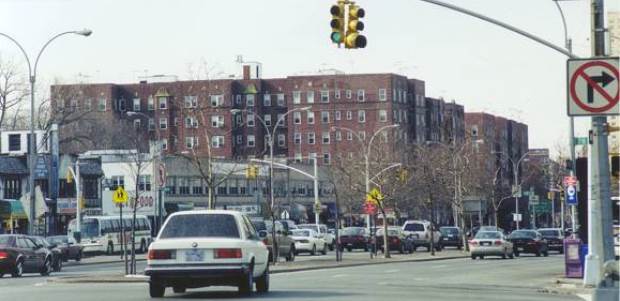
NYC Begins Reconstructing 'Boulevard of Death'
Queens Boulevard will get safer crossings, more crosswalks for pedestrians, protected bicycle lanes, expanded medians with trees and plantings, and reconfigured intersections to deter speeding. The mayor’s office says 185 people have died on this street since 1990, most of them pedestrians.
Queens Boulevard is considered one of New York City's most dangerous streets because 185 people have died there, most of them pedestrians, since 1990. New York Mayor Bill de Blasio announced the start of a $100 million reconstruction project July 23 -- part of the Vision Zero initiative to make city streets safer for pedestrians. Vision Zero's first year was the safest for pedestrians since records began being kept in 1910, and 2015 so far is safer still, according to de Blasio's office.
The project will create safer crossings, more crosswalks for pedestrians, protected bicycle lanes, expanded medians with trees and plantings, and reconfigured intersections to deter speeding. The first phase involves 1.3 miles of Queens Boulevard between Roosevelt Avenue and 73rd Street, a stretch where six people died, 36 suffered severe injuries, and 591 more were hurt in crashes between 2009 and 2013.
"We don't accept that streets like Queens Boulevard have to be dangerous, that children and grandparents have to be taken from their families year after year. And so, shoulder to shoulder with this community, we are taking action on one of the most ambitious and complex overhauls ever undertaken by the city. This street has earned the name 'Boulevard of Death.' Today, we begin work on the 'Boulevard of Life,'" said de Blasio.
"I want to thank Mayor Bill de Blasio for his relentless push to achieve Vision Zero in NYC, and the local community for working with us to improve Queens Boulevard," said Department of Transportation Commissioner Polly Trottenberg. "After decades of crashes, this corridor will be redesigned to become a safer, greener, and more attractive corridor for residents and businesses. I look forward to seeing cyclists enjoy a new protected bike lane, pedestrians confidently crossing, and motorists safely traversing through the world's borough."
The redesign process began in January 2015 with DOT-sponsored workshops to gather community input on safety needs and a complete study of traffic and safety conditions.